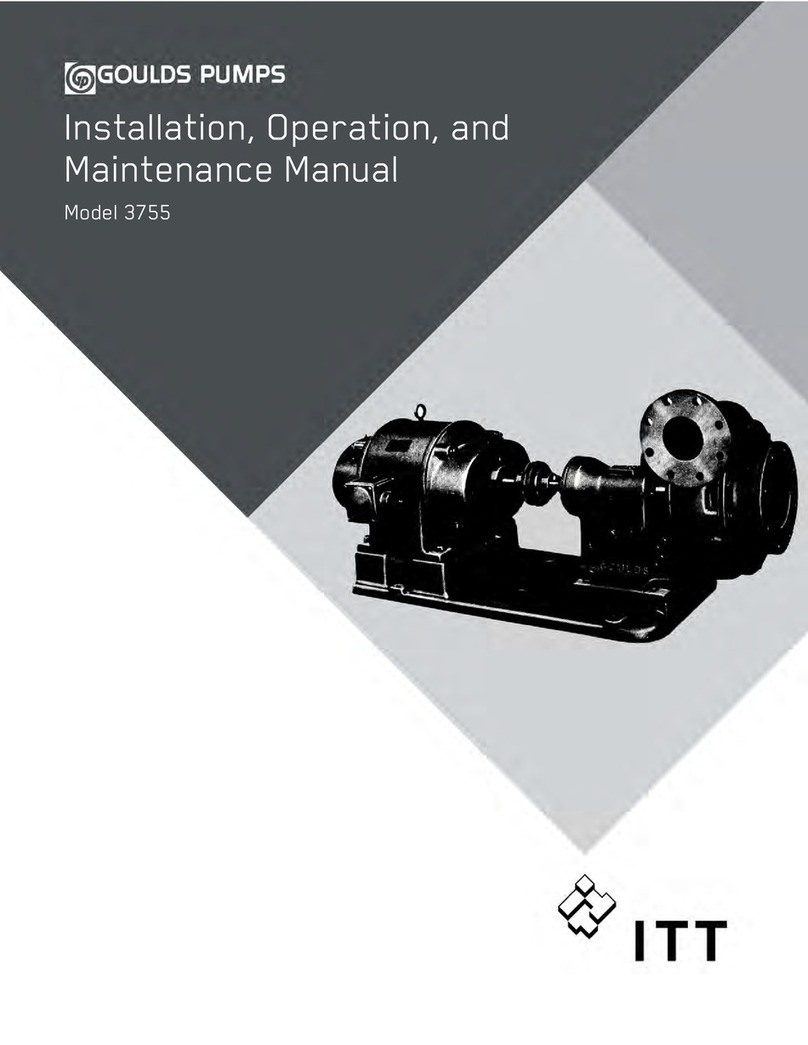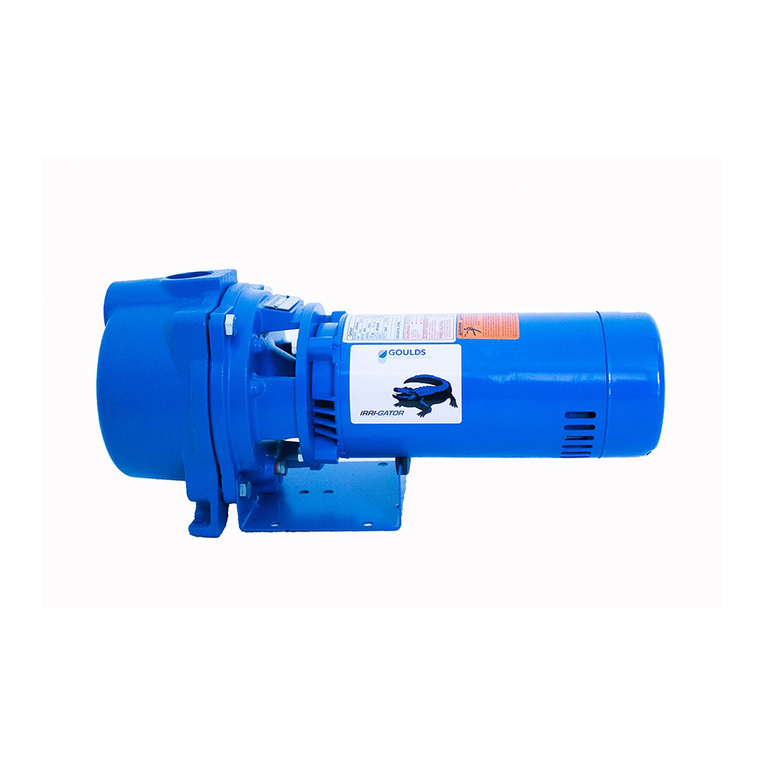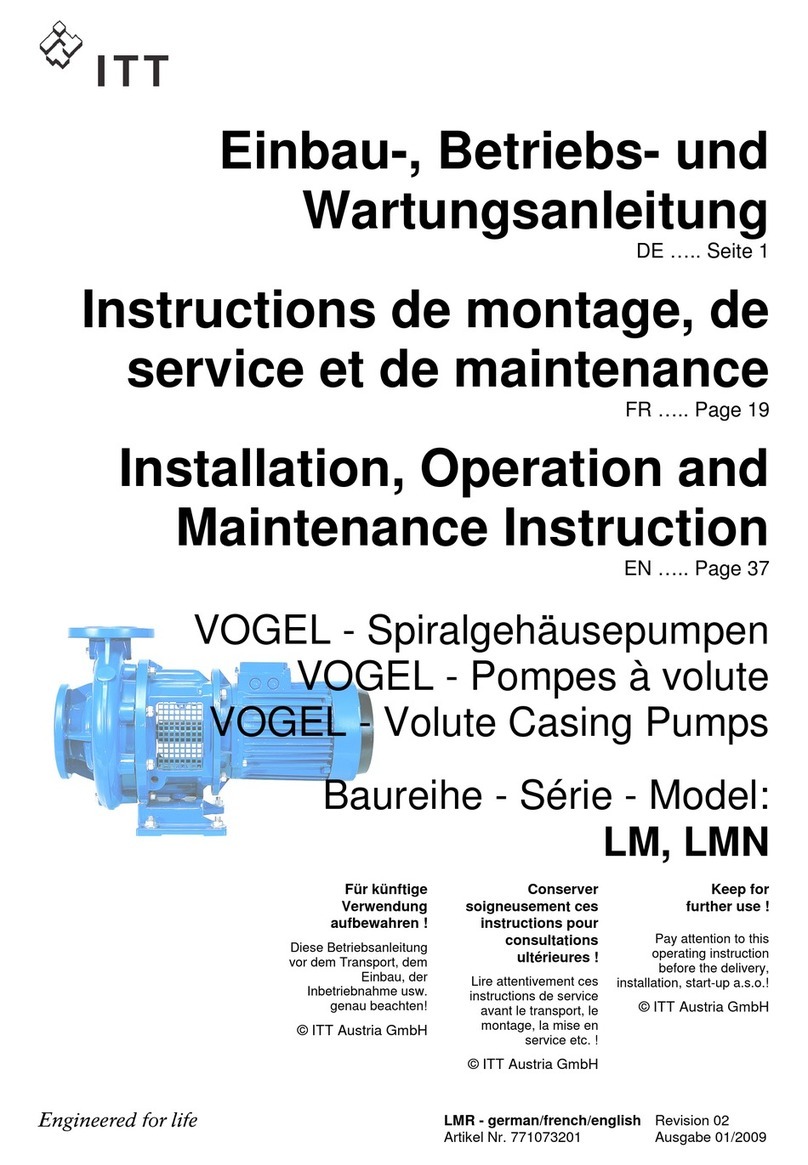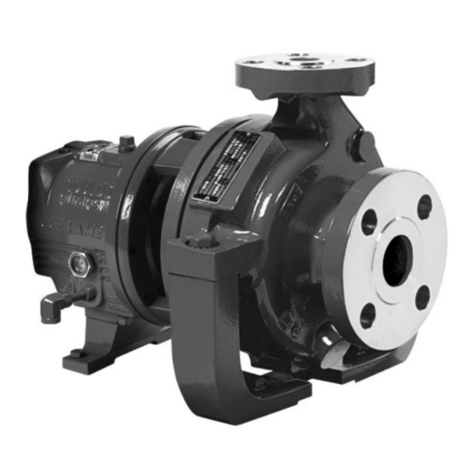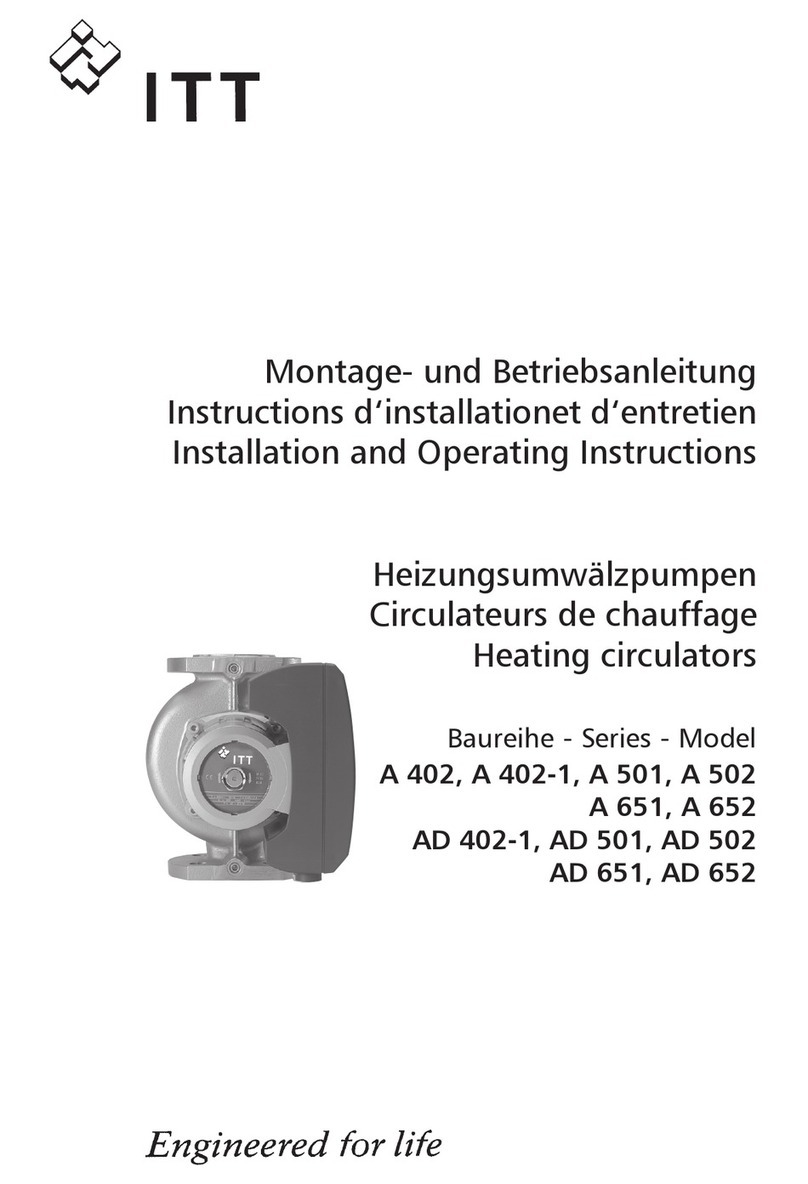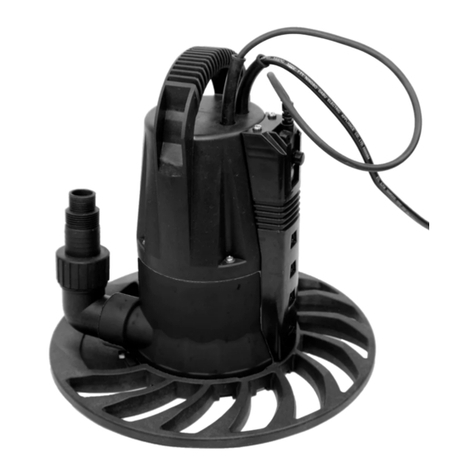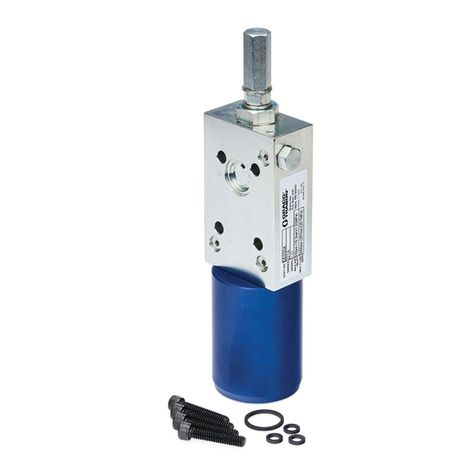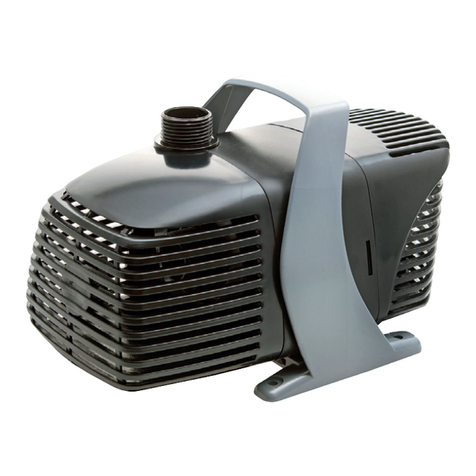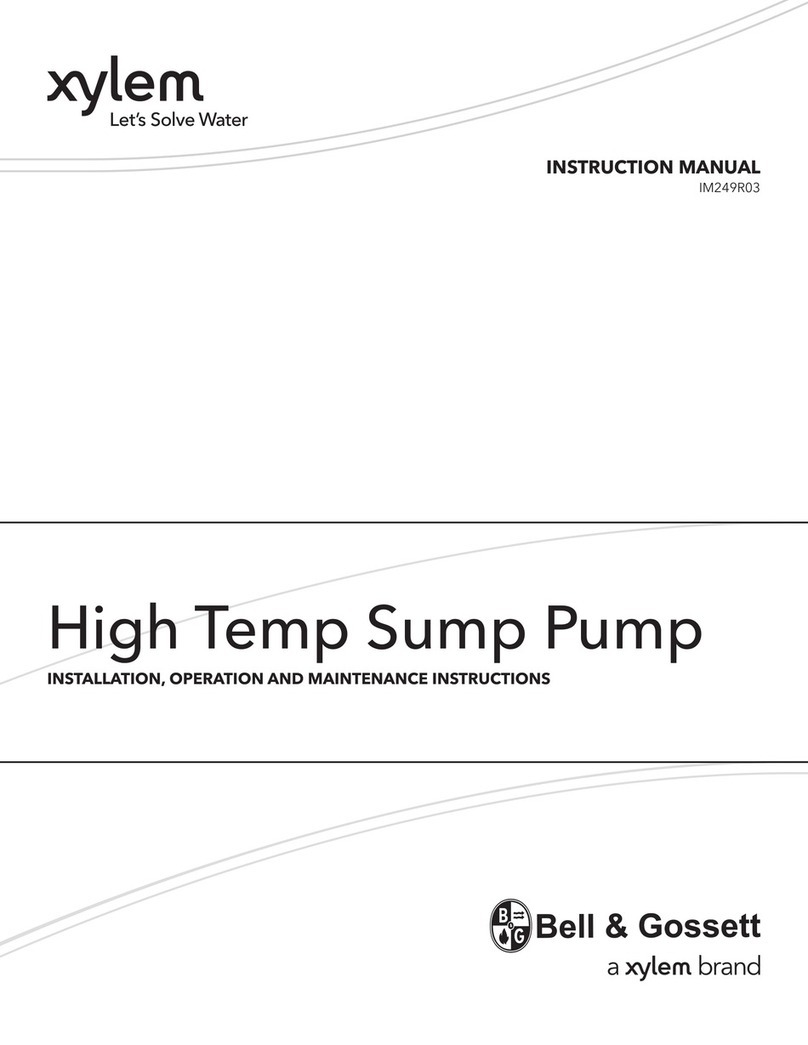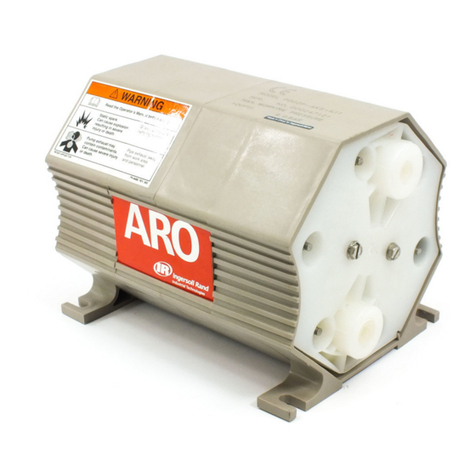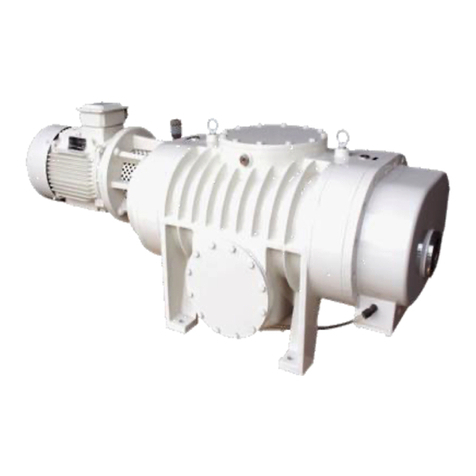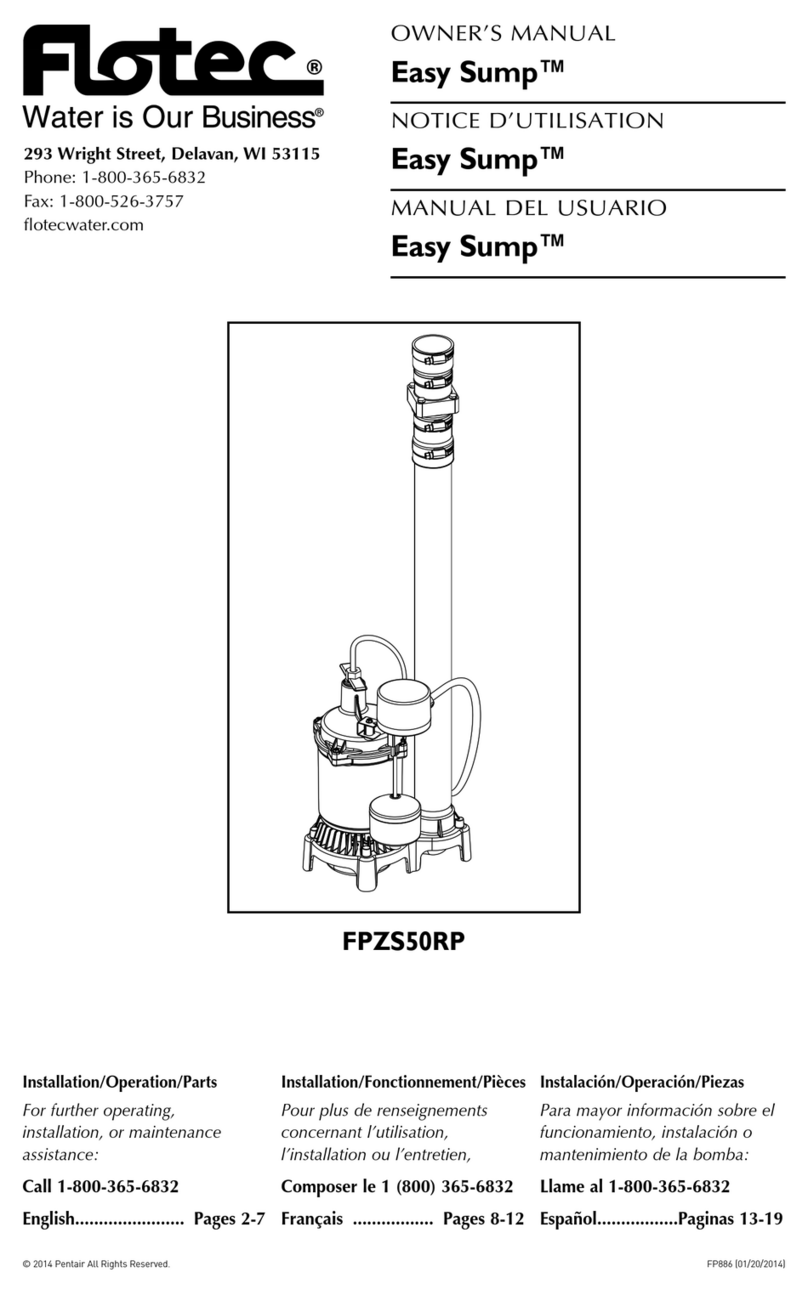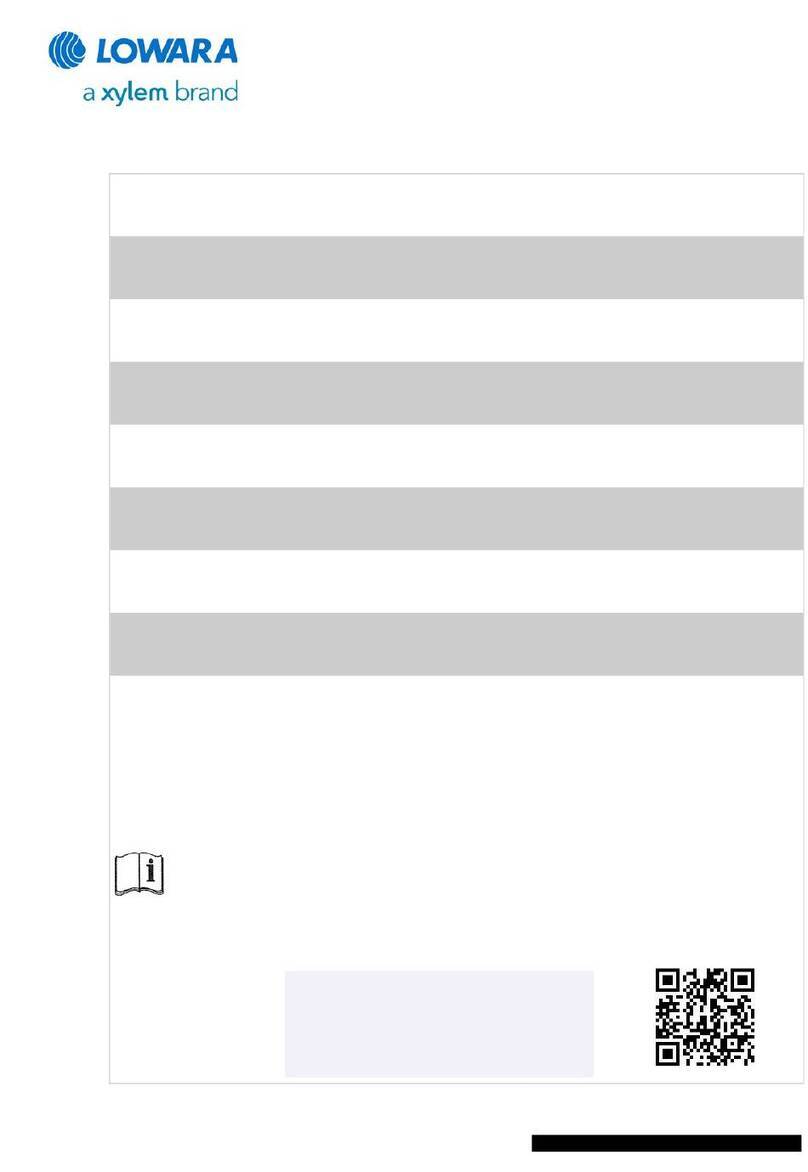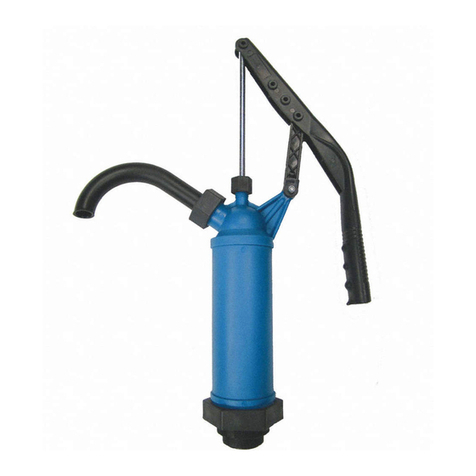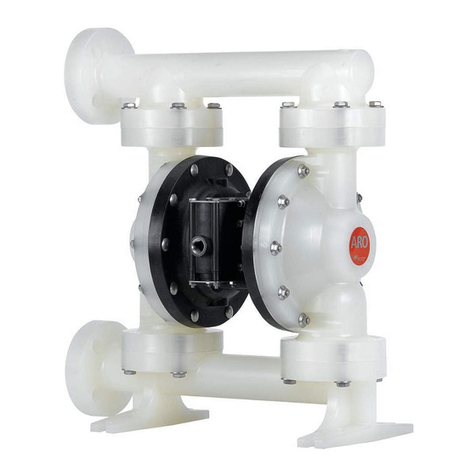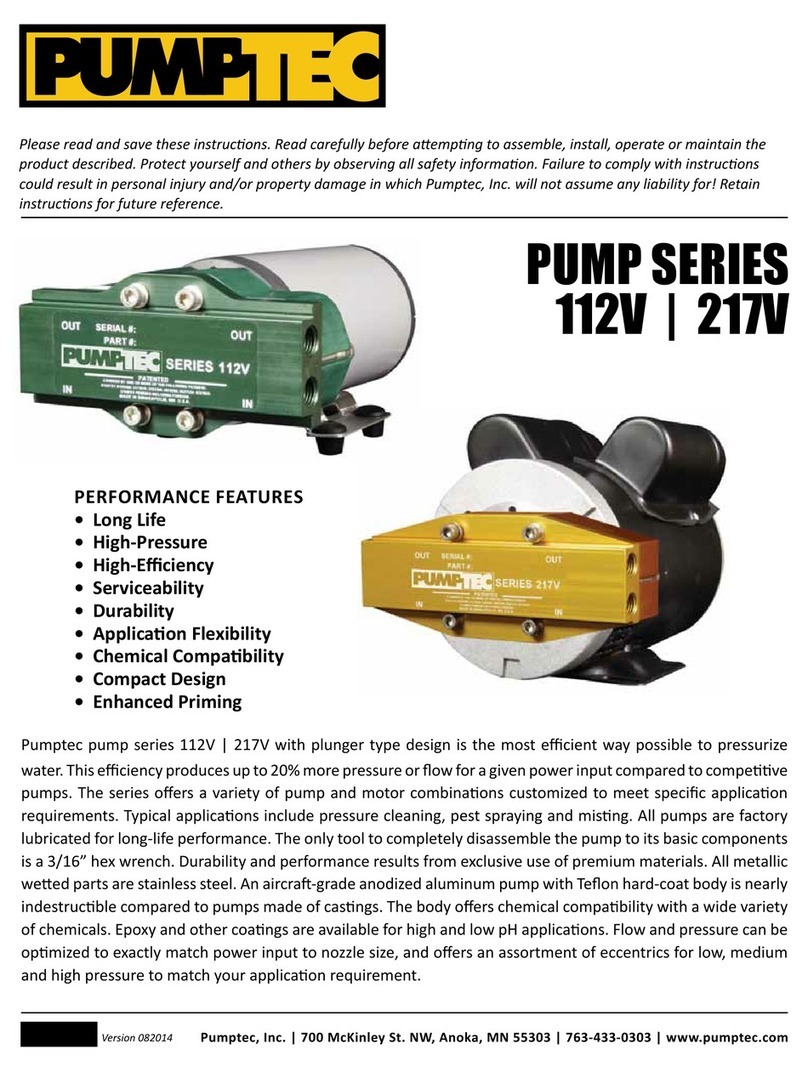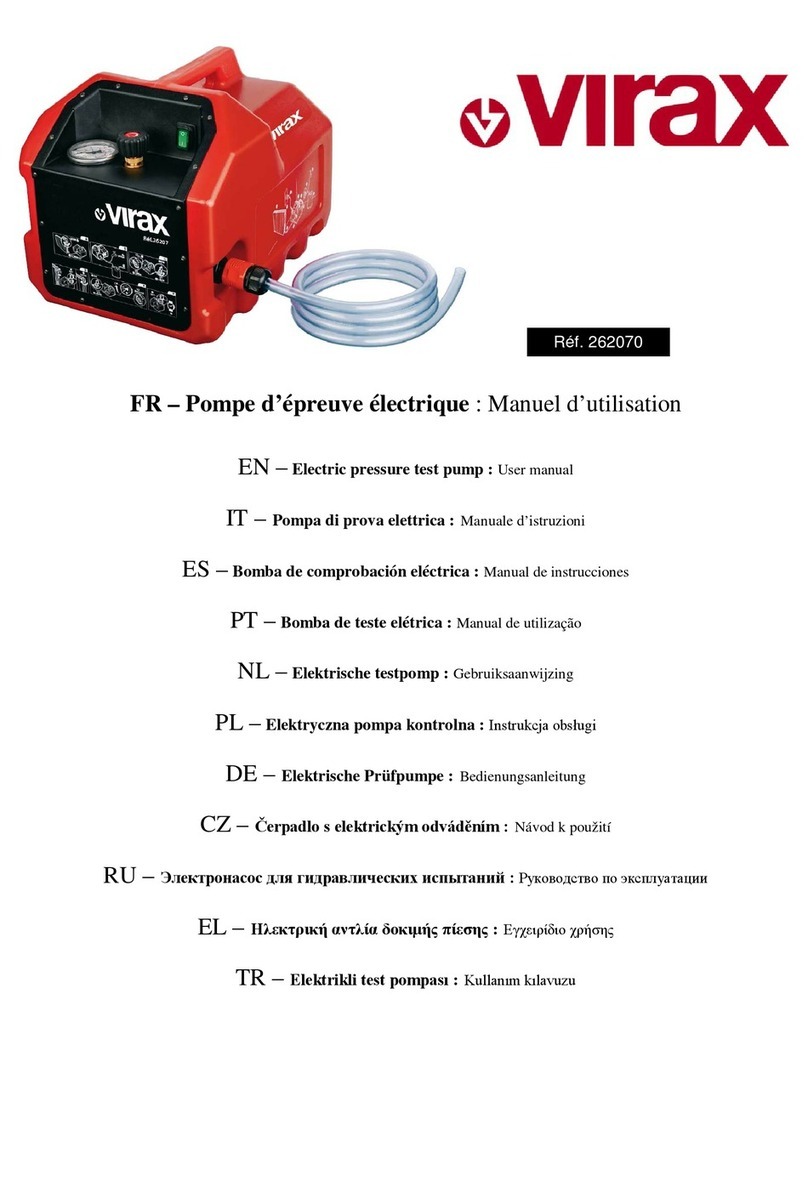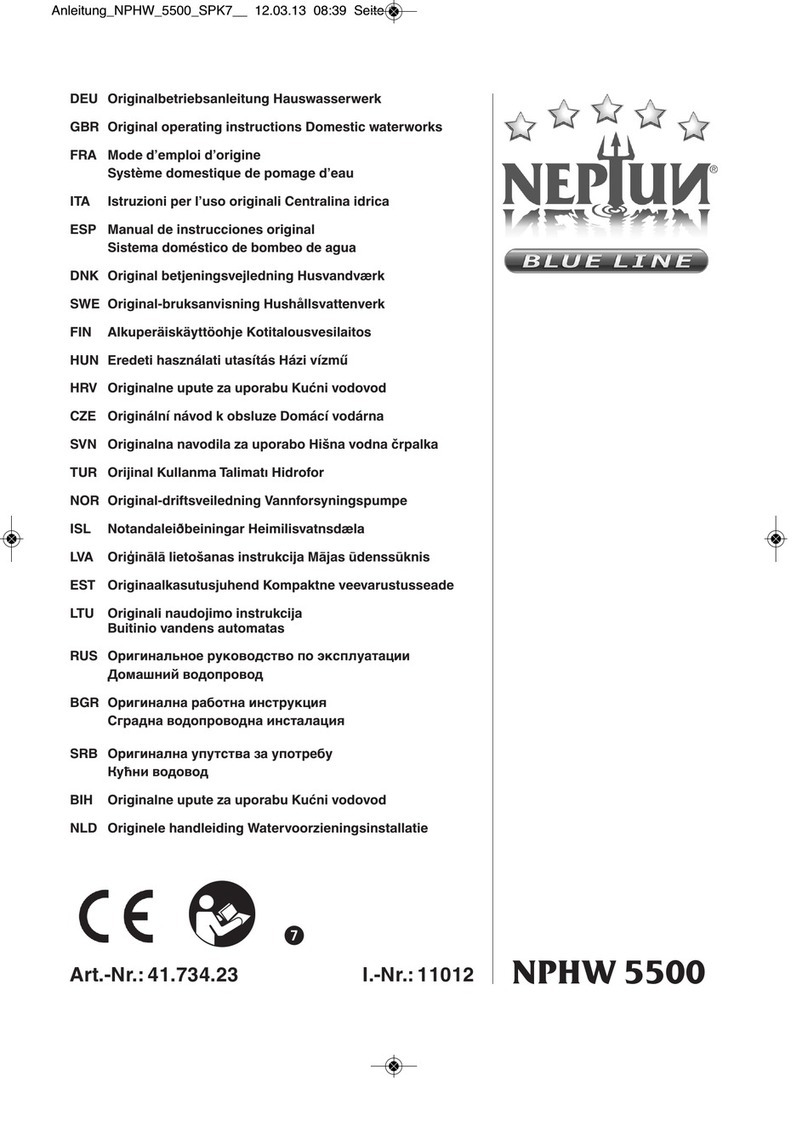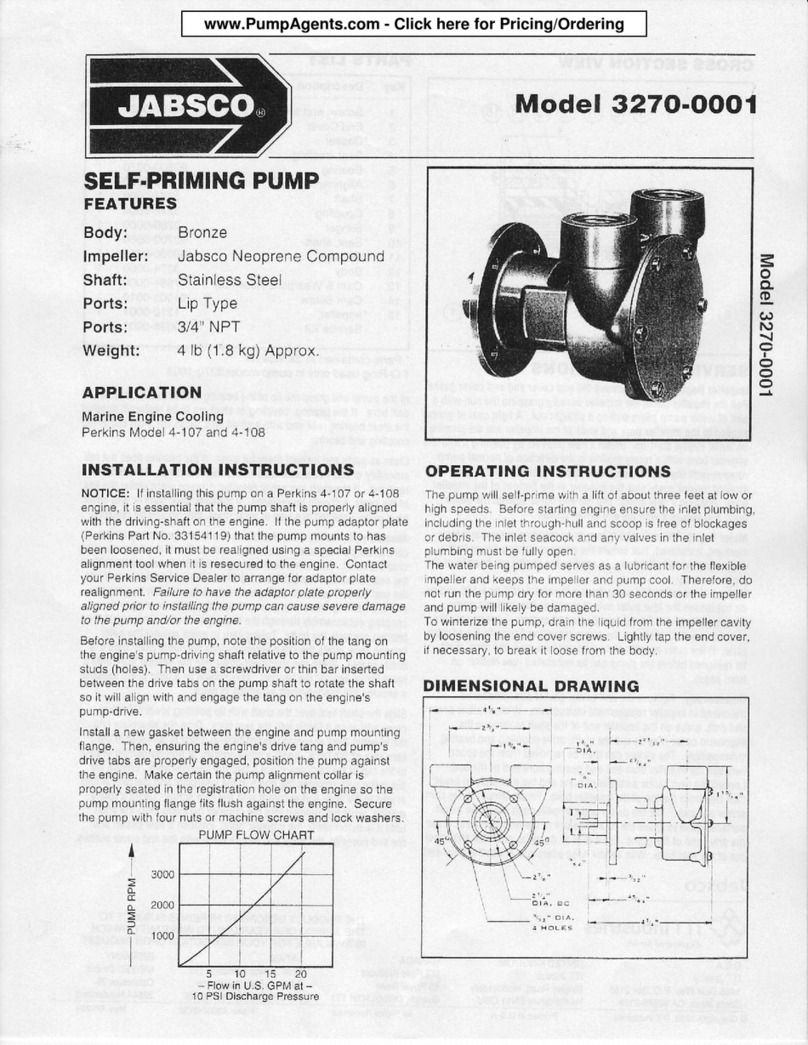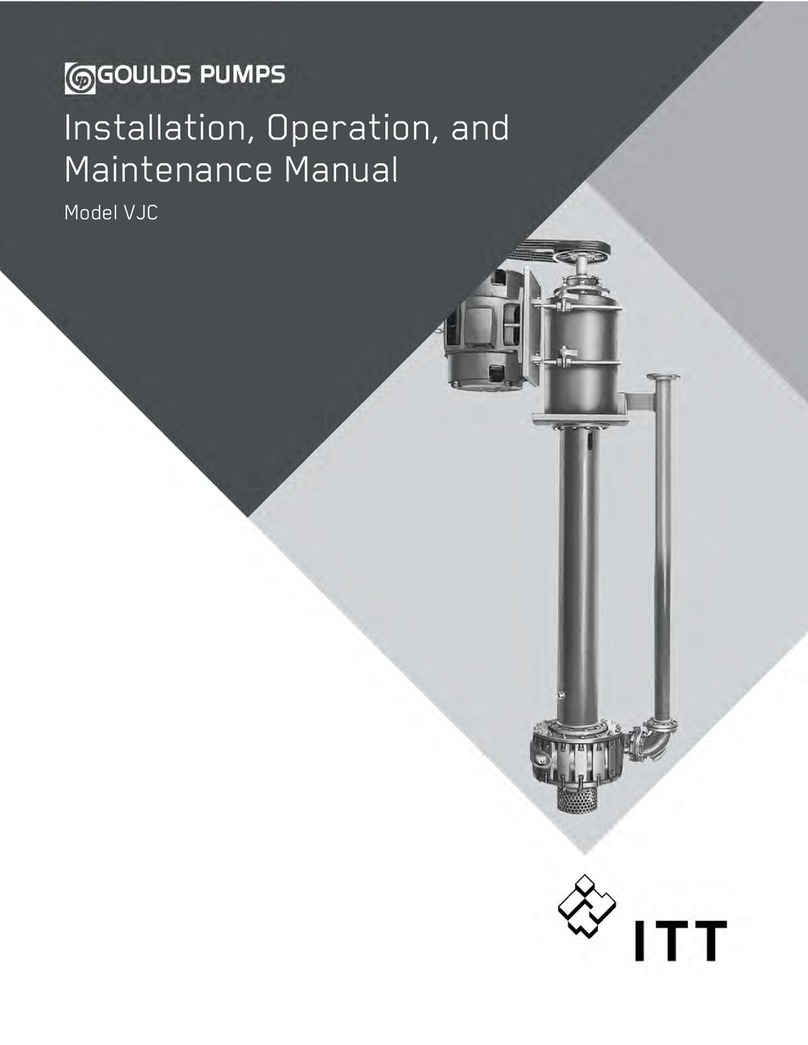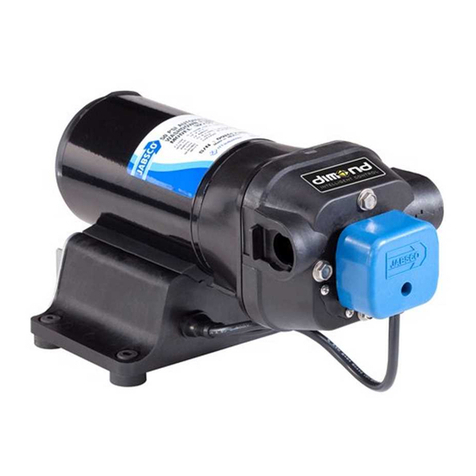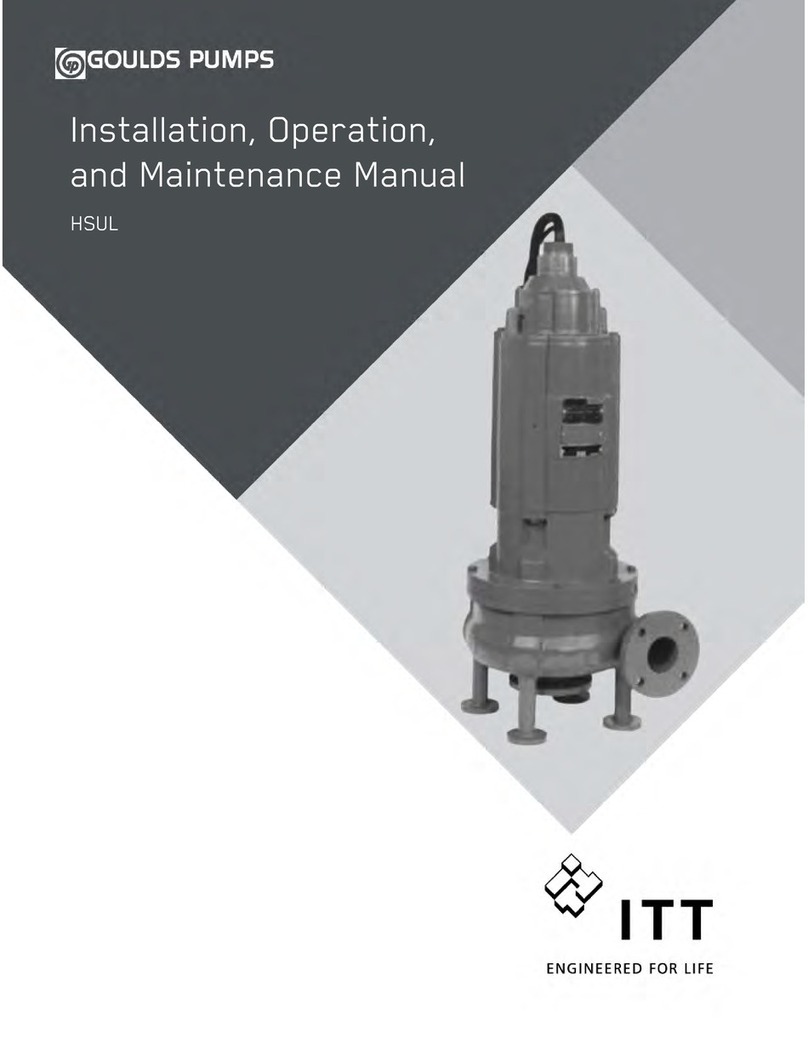
MOUNTING
The FLOJET G57C self-priming pump should be
mounted in a dry and adequately ventilated area. This
pump can be mounted several feet from the tank, above
or below the fluid level. For most applications, no more
than 4 feet above the fluid level is recommended. This is
not a submersible pump.
Secure Pump to desired fixture by inserting screws
through the rubber grommets in the baseplate of the
pump. Ports must be facing down. Contact factory for
mounting bracket and hardware options. Wall or rack
mounting is preferred.
HOSE CONNECTIONS
Liquid n - Use 3/8”, 1/2”, or 3/4” .D. reinforced hose or
equivalent. Avoid sharp bends that could restrict flow or
cause hose to collapse under vacuum.
Liquid Out - Use 3/8”, 1/2”, or 3/4” .D. reinforced hose for
discharge tube. 3/4” .D. hose must use 90° elbows when
using large muffler.
Air n - Make sure air regulator is set at zero. Use
reinforced 1/4” .D. hose. Connect “Air n” to air supply
fitting on regulator. f pumps are installed in an enclosed
area, it is recommended to connect a hose to the air
discharge port (exhaust) and vent air to atmosphere
(Requires small exhaust port PN# 20756103B not
included).
PLUMBING
Use a flexible hose to avoid excess stress on pump
ports. DO NOT crimp or kink hose. All hose should be
the same size as the pump port fittings.
All fittings and hose must be compatible with fluid being
pumped. t is recommended to use plastic fittings only.
The use of check valves in the plumbing system could
interfere with the priming ability of the pump. f
unavoidable, check valves in the pumping system must
have a cracking pressure of 2 PS or less.
Use a minimum 40 mesh strainer or filter in the tank or
pump inlet line to keep large foreign particles out of the
system.
Liquid inlet port must be equal to or larger than the liquid
outlet port.
OPERATION
At start-up, regulate air pressure to desired setting. For
most installations 20 PS (1.4 bar) inlet will be adequate,
although DO NOT go below 20 PS . Pump will operate
according to air supply. Flow and pressure can be
adjusted by increasing or decreasing air pressure to
accommodate varying product viscosities, length of lines
or other installation conditions. Review flow curves
located on page 1 for further assistance. High viscosity
fluids and hose length will limit priming distance.
IF PUMP IS T0 BE USED IN HIGH FLOW, LOW
PRESSURE APPLICATIONS, ADJUST AIR PRESSURE
TO 20 PSI (1.38 BAR) ABOVE DISCHARGE
PRESSURE.
CAUTION: DO NOT EXCEED 100 PSI (6.9 bar) AIR
INLET PRESSURE.
CONTINUOUS OPERATION ABOVE 120°F (48.9°C)
WILL REDUCE PUMP LIFE.
AIR MUST BE DRY AND OIL FREE.
Compressors must have dryers and/or a water separator
in the air distribution system. Pumps that fail due to water
in the air chamber will not be covered under the limited
warranty.
GENERAL SAFETY INFORMATION
Protect yourself and others by observing all safety
information. Follow all safety codes and the
Occupational Safety and Health Act (OSHA).
DDOO NNOOTT PPUUMMPP GGAASSOOLLIINNEE OORR FFLLAAMMMMAABBLLEE
LLIIQQUUIIDDSS OORR UUSSEE WWHHEERREE FFLLAAMMMMAABBLLEE
AAPPOORRSS AARREE PPRREESSEENNTT..
If used with C02or N2be sure the area is
well ventilated.
CAUTION:
Do not clean or service FLOJET pumps, hoses or valves
while the system is pressurized. Plastic air inlet ports do
not have a check valve. Prior to cleaning or servicing,
purge the pump by carefully tilting the pump so ports are
facing up and remove suction line from source. Turn air
off and disconnect air inlet line. (Standard brass air inlet
ports have a check valve).
PRE ENTI E MAINTENANCE TIPS
Tips to help prolong your pump’s life.
• f pumping liquid other than water, pump should be
flushed with water (if applicable) after every use.
•
Before freezing conditions occur, pump must be liquid free.
• f mounting pump in an outdoor environment, shield
pump from environmental extremes (i.e. sunlight,
water from washdown spray, rain, etc.). Avoid high
heat and humid installations.
• When using an air compressor, use an inline air dryer
(PN# FJ520B) before the pump to limit water build-up.
WARNING

